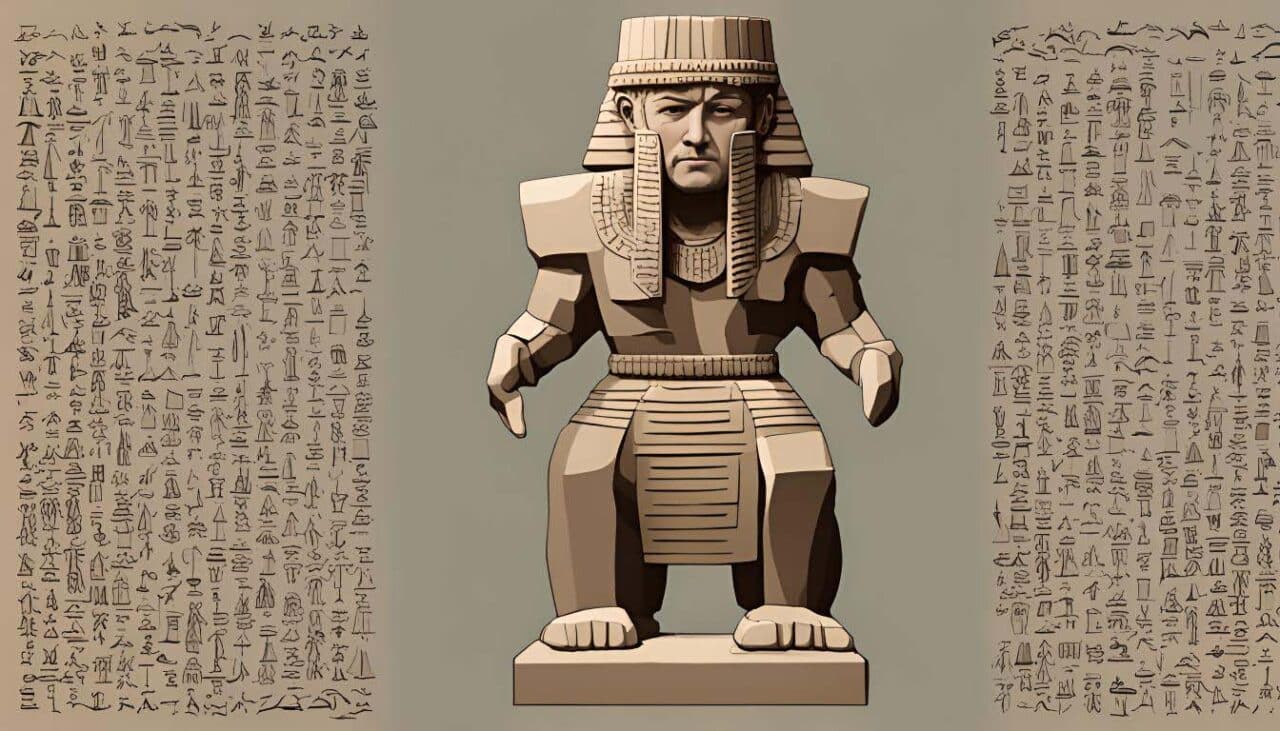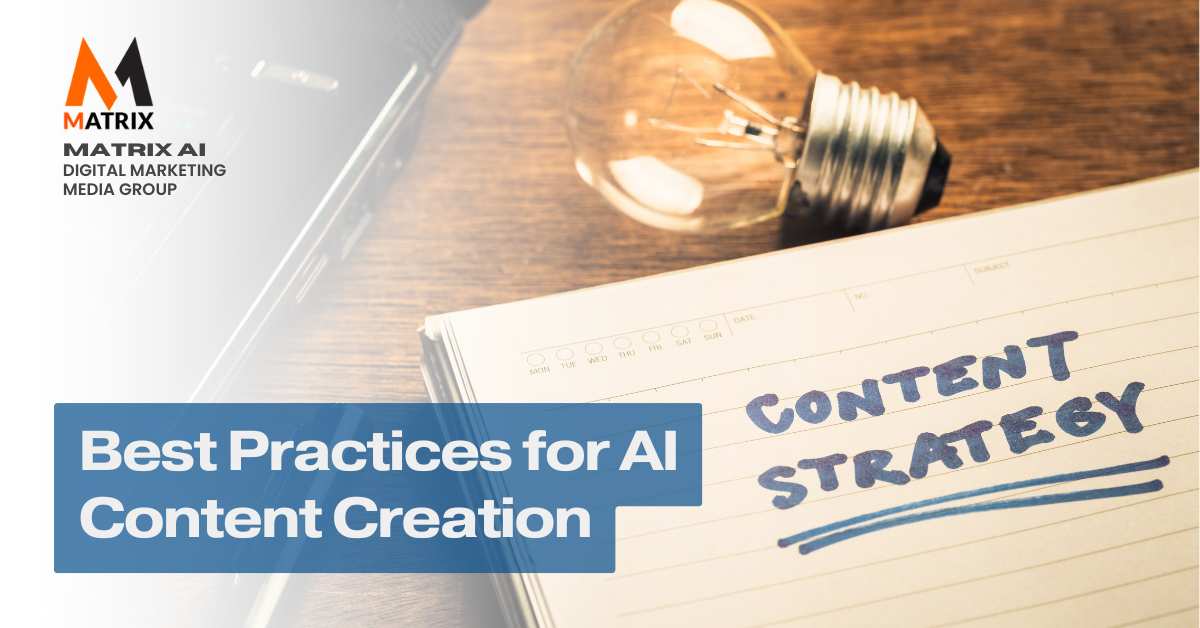Harnessing the Power of Artificial Intelligence to Elevate Your Content Strategy
Creating AI-generated content is like using a high-tech autopilot in a plane.
While the autopilot can handle the routine tasks of flying with precision and efficiency, a skilled pilot still needs to oversee the journey, make critical decisions, and ensure a smooth landing.
Similarly, AI can produce content quickly and at scale, but human creativity, insight, and ethical judgment are essential to guide the process and refine the final output.
Struggling to Keep Up with Content Demands?
In today’s digital landscape, creating consistent, high-quality content is more challenging—and more important—than ever. Without a clear plan and the right tools, your brand risks falling behind in the crowded marketplace.
1. Introduction to AI Content Creation
What is AI Content Creation?
Definition and Overview
AI content creation uses artificial intelligence technologies to generate, enhance, or optimize written, visual, or multimedia content.
By leveraging algorithms, machine learning models, and natural language processing (NLP), AI can produce content that mimics human writing, assist in idea generation, or refine existing content for better engagement and performance.
Importance and Relevance in Today’s Digital Landscape
In today’s fast-paced digital environment, the demand for content is insatiable. Brands must constantly produce high-quality content to maintain visibility, engage audiences, and drive conversions.
AI content creation has become a critical tool for meeting these demands. It enables businesses to produce content at scale, maintain consistency across various platforms, and personalize messaging to diverse audience segments.
Benefits of Using AI for Content Creation
Efficiency and Speed: AI-driven content creation tools can generate content in a fraction of the time it would take a human writer.
This efficiency allows businesses to respond quickly to trending topics, produce timely content for campaigns, and manage a higher volume of content with fewer resources.
Cost-Effectiveness: Creating content manually requires significant investment in time and personnel. AI tools, on the other hand, can reduce these costs by automating repetitive tasks, such as drafting blog posts or generating social media updates.
This cost-effectiveness is particularly beneficial for small businesses and startups with limited budgets.
We have seen a 75% reduction in cost, generating better content faster with AI and humans in the loop. man
Scalability and Consistency: AI content creation tools are inherently scalable.
They can produce vast content without sacrificing quality, essential for large enterprises that must maintain a consistent brand voice across multiple platforms and languages.
Consistency is crucial in content marketing, and AI ensures that messaging remains uniform, regardless of the volume of content produced.
Challenges and Considerations
Quality Control: While AI can generate content quickly, maintaining the quality of that content is a challenge.
AI tools may produce grammatically correct content without depth, creativity, or a human touch. Ensuring that content meets desired quality standards often requires human oversight.
Ethical Implications: The use of AI in content creation raises ethical questions, particularly around issues of authenticity and originality.
There is a risk that AI-generated content may inadvertently plagiarize existing work or produce biased or inappropriate content. Guidelines to address these concerns and ensure the ethical use of AI tools are essential.
Dependence on Human Oversight: Despite AI’s advanced capabilities, human oversight remains critical. AI tools must fully understand the nuances of language or the cultural context of certain topics. Therefore, human editors must review and refine AI-generated content, ensuring it aligns with brand values and resonates with the target audience.
Drive Better Results with a Complimentary Marketing Audit
Take the guesswork out of your marketing strategy. Our Free Marketing Audit is designed to analyze your current efforts, identify gaps, and uncover growth opportunities. Whether you’re struggling with low ROI, limited engagement, or unclear targeting, we’ll provide actionable insights to help you achieve your business goals.
2. Understanding the Role of AI in Content Creation
Types of AI Used in Content Creation
Natural Language Processing (NLP)
NLP is a branch of AI focused on the interaction between computers and human language.
It enables AI tools to understand, interpret, and generate human language meaningfully and usefully. NLP is at the core of many AI content creation tools, allowing them to generate coherent and contextually relevant content.
Machine Learning and Deep Learning
Machine learning involves training AI models on large datasets to recognize patterns and make predictions. In content creation, machine learning models can be trained to generate content that mimics the style and tone of human writers.
Deep learning, a subset of machine learning, uses neural networks with multiple layers to analyze and generate more complex content, such as long-form articles or video scripts.
AI Writing Assistants vs. Full AI Content Generators
AI writing assistants, like Grammarly or Jasper, help writers by suggesting improvements, correcting grammar, and optimizing content for readability.
These tools enhance human writing rather than replace it. Full AI content generators, on the other hand, can produce complete content pieces from scratch.
Tools like OpenAI’s GPT-3 can generate blog posts, articles, and creative writing with minimal human input.
Applications of AI in Content Creation
Blog Writing and Article Generation
AI tools can generate blog posts and articles by analyzing keywords, understanding the topic, and producing informative and engaging content. These tools are particularly useful for generating content at scale, such as multiple blog posts on similar topics.
Social Media Content
AI can analyze trends, hashtags, and audience preferences to create social media posts optimized for engagement.
AI tools can also schedule posts, analyze performance metrics, and suggest improvements for future content.
Video Script Generation
AI tools can generate video scripts by analyzing existing content, understanding the target audience, and creating narratives that resonate with viewers.
These tools are useful for creating explainer videos, promotional content, or instructional videos.
SEO Optimization and Keyword Generation
AI tools can analyze search engine algorithms and generate optimized SEO content.
This includes identifying relevant keywords, creating meta descriptions, and ensuring the content is structured to improve search engine rankings.
Human-AI Collaboration
Balancing AI-Generated Content with Human Creativity
While AI can produce content quickly and efficiently, it lacks the creativity and emotional intelligence that human writers possess.
The best results are often achieved when AI-generated content is used as a starting point, with human writers adding creative flair, emotional depth, and cultural relevance.
Best Practices for Human Oversight and Editing
A robust review and editing process is essential to ensuring the quality and authenticity of AI-generated content.
This includes checking for accuracy, refining the tone and style, and ensuring the content aligns with the brand’s voice. Human editors should also be responsible for making ethical decisions about the content, such as ensuring it does not perpetuate biases or misinformation.
3. Best Practices for Creating High-Quality AI Content
Setting Clear Objectives
Aligning Content Goals with Business Objectives
Before using AI to generate content, defining clear objectives is crucial.
These should align with the overall business goals, whether increasing brand awareness, driving traffic to a website, or generating leads. Understanding these objectives will help guide the AI content creation process and ensure the resulting content serves its intended purpose.
Defining Target Audience and Purpose
Knowing the target audience is essential for creating effective content. AI tools can be trained to produce content that resonates with specific audience segments by analyzing demographics, preferences, and behavior patterns.
Defining the purpose of the content—whether it’s to inform, entertain, or persuade—will also help guide the AI in generating appropriate content.
Unlock Rapid Growth with Our Facebook Ads Starter Kit
Transform your Facebook advertising strategy in just one month.
Get expert strategy, seamless ad setup, and your first month of optimized ads — all designed to put your business on the fast track to success.
Choosing the Right AI Tools
Criteria for Selecting AI Content Creation Tools
When selecting AI tools for content creation, consider factors such as ease of use, integration capabilities, and the level of customization available. It’s also important to assess the tool’s ability to produce content that aligns with your brand’s voice and style.
Additionally, look for tools that offer robust analytics and reporting features to track the performance of AI-generated content.
Review of Popular AI Content Platforms
Several AI content creation platforms are available, each with strengths and weaknesses. For example, OpenAI’s GPTo is known for generating human-like text, making it ideal for creating blog posts and articles.
Jasper is another popular tool that offers a range of content creation features, including SEO optimization and social media post generation. Reviewing these platforms and choosing the one that best suits your needs is important.
Integration with Existing Content Management Systems
Choosing AI tools that integrate with your existing content management systems (CMS) is beneficial for streamlining the content creation process.
This allows for seamless content generation, editing, and publishing. Many AI tools offer plugins or APIs that enable easy integration with popular CMS platforms like WordPress, HubSpot, or Shopify.
Ensuring Content Quality

Techniques for Improving AI Content Quality
To enhance the quality of AI-generated content, consider using a hybrid approach that combines AI-generated text with human editing.
This might involve using AI to draft the initial content and then refining it with human input to add creativity, emotion, and context.
Additionally, setting clear guidelines for the AI tool—such as preferred tone, style, and structure—can help ensure the content meets the desired quality standards.
Importance of Human Editing and Fact-Checking
AI tools are not infallible and may produce factually incorrect content or lack nuance.
Human editors are essential for reviewing AI-generated content, ensuring accuracy, and making necessary adjustments to align with the brand’s voice and messaging.
Fact-checking is especially important when content covers sensitive or complex topics.
Incorporating Feedback Loops for Continuous Improvement
Establishing feedback loops is important to continuously improve the quality of AI-generated content.
This involves regularly reviewing content performance, gathering stakeholder feedback, and using this information to refine the AI’s training data and algorithms. Over time, this iterative process can lead to better content quality and more effective AI-driven content strategies.
Maintaining Ethical Standards
Addressing Plagiarism Concerns
One ethical concern with AI-generated content is the potential for plagiarism. AI tools may inadvertently generate content that resembles existing work, leading to copyright infringement issues.
To mitigate this risk, it’s important to use AI tools with robust plagiarism detection features and conduct manual checks to ensure the originality of the content.
Ensuring Transparency in AI-Generated Content
Transparency is crucial when using AI to generate content. Audiences should be made aware when content is AI-generated, especially in cases where the content may influence decisions, such as product reviews or news articles.
This transparency helps maintain trust and ensures that audiences understand the context in which the content was created.
Ethical Use of AI in Content Creation
The ethical use of AI in content creation extends beyond plagiarism
and transparency. It also includes considering potential biases in AI-generated content. AI models are trained on large datasets, which may contain biases that can be reflected in the generated content.
It’s essential to review AI-generated content for biases and mitigate them, such as diversifying the training data and implementing ethical guidelines for content creation.
4. Optimizing AI Content for SEO

Understanding SEO for AI-Generated Content
How AI Content Affects Search Engine Rankings
AI-generated content can significantly impact search engine rankings, both positively and negatively. While AI tools can optimize content for specific keywords and improve readability, there is also a risk that search engines may penalize content that is overly automated or lacks originality.
To avoid this, it’s important to ensure that AI-generated content is unique, valuable, and relevant to the target audience.
Importance of Keyword Integration and Semantic Search
Effective SEO requires more than just inserting keywords into the content. AI tools can help by analyzing search intent and identifying keywords and phrases that enhance the content’s relevance.
Additionally, AI can assist in structuring content that aligns with semantic search, where search engines interpret the meaning behind queries to deliver more accurate results.
Your Blueprint for SEO Success in 2025
Whether you’re a business owner, marketer, or seasoned SEO professional, this guide is tailored to give you a competitive edge in the evolving digital landscape. Get SEO Pricing.
Using AI Tools for SEO Optimization
AI-Powered Keyword Research Tools
AI tools can automate the process of keyword research by analyzing search trends, competitor content, and audience behavior.
These tools can suggest relevant keywords, long-tail phrases, and content topics likely to perform well in search engine rankings. Incorporating these insights into AI-generated content can significantly improve its SEO performance.
Optimizing Meta Descriptions, Titles, and Headers
AI tools can also help optimize meta descriptions, titles, and headers, which are critical for SEO.
AI can analyze content and identify the most relevant keywords to generate optimized meta tags that improve click-through rates and search engine visibility.
Additionally, AI can suggest a structure for headers and subheaders to enhance the content’s readability and SEO value.
Using AI to Analyze and Optimize Content for Voice Search
Voice search is becoming popular, and AI tools can help optimize content for this medium.
AI can generate more conversational content and align with natural language patterns by analyzing how people phrase queries in voice searches. This can improve the content’s chances of ranking in voice search results, especially for long-tail keywords and question-based queries.
Affordable SEO Solutions That Drive Real Results
Matrix Marketing Group Delivers Customized SEO Strategies with Transparent Pricing for Maximum ROI. See SEO Services.
Monitoring and Adjusting Content Performance
Tracking Content Performance with AI Analytics Tools
AI analytics tools can provide valuable insights into how AI-generated content is performing.
These tools can track page views, engagement, and conversion rates, allowing you to identify which content resonates with your audience. By analyzing this data, you can make informed decisions about future content strategies and optimizations.
A/B Testing AI-Generated Content
A/B testing is a powerful method for optimizing content. AI tools can automate the creation of multiple versions of content and test them against each other to determine which performs better.
This allows you to fine-tune your content strategy and ensure you produce the most effective content possible.
Continuous Optimization for Better Rankings
SEO is not a one-time task but an ongoing process. AI tools can help with continuous optimization by analyzing content performance over time and recommending improvements.
This might include updating keywords, refreshing content, or adjusting the content structure to align with evolving search engine algorithms.
5. Case Studies and Examples
Successful Implementation of AI Content
Case Studies from Various Industries
Many industries have successfully implemented AI content creation tools to achieve their marketing and business goals.
For example, in the e-commerce industry, companies have used AI to generate product descriptions at scale, resulting in improved SEO and increased sales.
AI has generated news articles in the media industry, freeing journalists to focus on more in-depth reporting. These case studies highlight AI’s versatility and effectiveness in content creation.
Lessons Learned and Key Takeaways
From these case studies, several key takeaways emerge.
- First, AI is most effective when used along with human oversight.
- Second, clear objectives and guidelines are essential for producing high-quality content.
- Finally, continuous monitoring and optimization are critical for maintaining content effectiveness and SEO performance.
Comparative Analysis – AI-Generated Content vs. Human-Written Content
While AI-generated content can produce high-quality results, it is not a complete replacement for human-written content.
AI content is often more efficient and consistent but may require more creativity, emotional depth, and cultural relevance than human writers. A balanced approach, where AI is used to assist human writers rather than replace them, often yields the best results.
Analysis of Content Performance Metrics
Comparing AI-generated and human-written content performance metrics can provide valuable insights.
AI-generated content may excel in areas such as SEO performance and content volume, while human-written content may perform better in engagement and emotional resonance.
Understanding these differences can help you optimize your content strategy to leverage the strengths of both AI and human writers.
Future Trends in AI Content Creation

Emerging Technologies in AI Content Creation
AI content creation is rapidly evolving, with new technologies and tools emerging regularly.
For example, advancements in generative AI, such as OpenAI’s GPT-4, are pushing the boundaries of what AI can do in content creation.
These emerging technologies promise to make AI even more powerful and versatile, enabling more personalized and engaging content.
Predictions for the Future of AI in Content Marketing
AI will likely play an increasingly central role in content marketing as it evolves.
In the future, we may see AI tools that can create content that is indistinguishable from human-written content and AI that can autonomously manage entire content marketing campaigns.
However, human oversight and creativity will remain essential to ensure that AI-generated content is effective and ethically sound.
6. Conclusion
Summary of Key Points
In summary, AI content creation offers numerous benefits, including efficiency, scalability, and cost-effectiveness.
However, to maximize these benefits, it’s essential to set clear objectives, choose the right tools, ensure content quality through human oversight, and maintain ethical standards.
Importance of Balancing AI and Human Input
While AI is a powerful tool, it must replace human creativity and judgment.
The best results are often achieved when AI and human writers collaborate, leveraging their strengths to produce effective and engaging content.
The Evolving Role of AI in Content Creation
AI is transforming content creation, offering new opportunities for efficiency and innovation.
As AI technology advances, it will become an even more integral part of content marketing strategies.
However, staying informed about the latest developments and best practices is important to ensure that AI is used effectively and ethically.
Encouragement to Stay Updated with AI Trends and Tools
Keeping up with the latest AI trends and tools is crucial to remain competitive in the digital landscape.
This includes regularly reviewing new AI content creation platforms, experimenting with emerging technologies, and continuously refining your content strategy based on data and feedback.
Encouraging Readers to Explore AI Content Creation Tools
If you still need to start using AI in your content creation process, now is the time to explore the available tools and platforms.
Whether you’re looking to generate blog posts, optimize social media content, or improve your SEO strategy, AI offers a range of solutions that can help you achieve your goals.
Finally, we encourage you to share your experiences with AI content creation.
Whether you’ve had successes, challenges, or learnings, your insights can help others navigate the evolving landscape of AI-driven content.
Content That Converts: Transparent Pricing for Maximum ROI
Explore Matrix Marketing Group’s Flexible Pricing Plans for Premium Content and Marketing Solutions Tailored to Your Goals.
7. Additional Resources
Further Reading
Books, Articles, and Research Papers on AI Content




